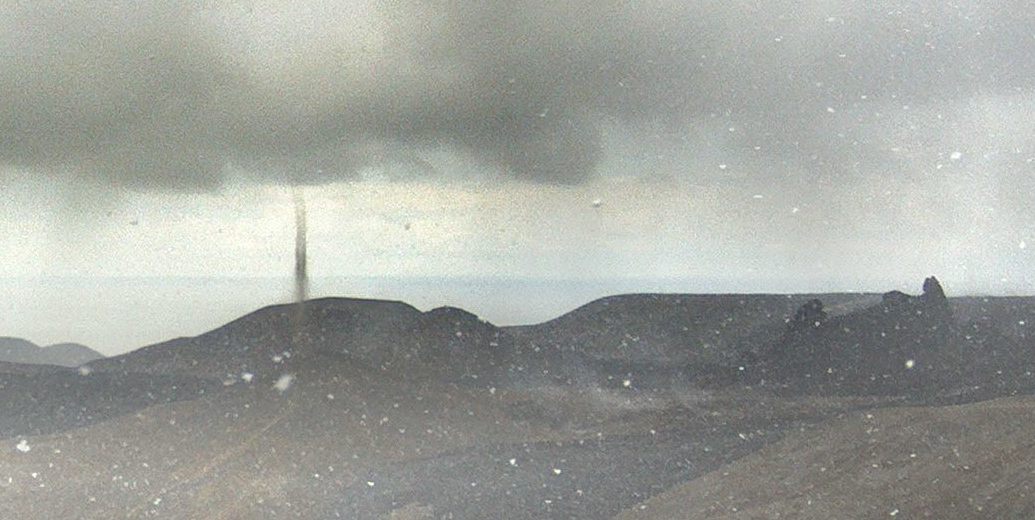This isn't one of the biggies, and in fact, the phenomenon has been observed when Kilauea's lava was entering the sea (and probably elsewhere at various volcanoes), but it's cool that pioneering volcanologist Frank Perret snapped a
shot (with his trusty folding 3A or 2C Kodak pocket camera) of what he called a "spiracle" during Sakurajima's big 1914 eruption in Japan that joined the island volcano out in Kagoshima Bay to land.
As he was an electrical engineer at heart, in addition to knowing physics, his caption links the vortice to clouds above through electricity, though I don't know how well that idea has held up over time. He, and some other scientific and soldierly lunatics did walk twice through an eruption plume at Vesuvius that was electrically charged and drawn to the ground (the guy had worked with Edison, as well as inventing various types of electrical machinery and a few electric cars, so I trust his
description of that very dangerous hike, though I haven't come across anything recent about this -- just some things about volcanic lightning).
He also describes second-hand reports of vortices at Vesuvius in 1906 (that was a really big eruption, too). These were on land, on very hot debris avalanche fields, not associated with the "electric plume."







